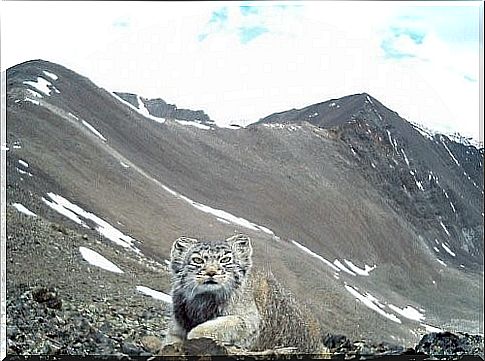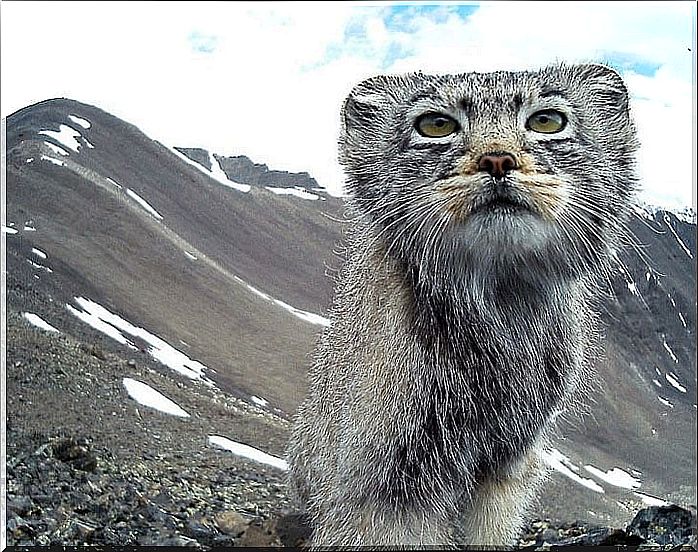A Camera Recorded An Endangered Cat In Russia

An expedition to the Altai nature reserve in southern Siberia made a remarkable find. With a camera she captured an endangered Pallas cat. Also known as Manul, this cat is an animal that cannot be watched very often. It is also on the red list of the International Union for the Conservation of Nature and Natural Resources. There the species has the classification “almost threatened”. It is therefore remarkable that one specimen could be photographed.
Learn the story of the expedition that photographed an endangered cat
Since she is reluctant to show herself to people – and there will be good reasons for her – there aren’t many ways to see pictures of this cat in its natural habitat.
On that occasion, the photo was taken during an expedition organized by the World Wildlife Fund (WWF), the Argalí Regional Fund for Animal Protection and the Altai Nature Reserve .
As the endangered Pallas cat is not usually photographed, take the opportunity to admire this beautiful cat.
Some facts about the manul
As you can see, these animals look pretty big and fat. However, they are the same size and weight as the average domestic cat. But its long and dense fur, which protects it from the low temperatures of its habitat, makes it look larger than it actually is.
The manul has around 9,000 hairs per square inch and they can reach a length of up to 7 inches.
This carnivorous mammal belongs to the Felidae family. They mainly extend, in addition to the above-mentioned Siberia, to the steppes of Mongolia and Tibet. They can be found at altitudes up to 5000 meters above sea level.
The manul was classified by the German zoologist Peter Simon Pallas in 1776, who named it Felis manul. But recently it was discovered to be a genus of Otocolobus.
More information about the Pallas cat
Among others, we can highlight the following characteristics of these beautiful cats:
- Short paws and claws
- Plump and solid body
- Long, hairy tail with black rings
- The color of the fur ranges from ash gray to reddish
- Eyes with round pupils
- Low and separated ears
- Smooth looking muzzle
In addition , they are solitary animals that usually hunt at dusk. Its main diet consists of small rodents and birds. While they spend most of their day in crevices in the rocks or in caves, one has also surprised them that they lie like good kittens in the sun.
A species hunted by poachers

The female of the Manul gives birth to between 2 and 6 kittens per litter after a gestation period between 66 and 75 days. The young weigh around 90 grams and are born covered with thick fur. They are fully grown in six months.
In captivity, there are reports that the critically endangered Pallas cats live for up to 11 years. Although they can reproduce in these conditions, survival rates are lower because of the infections they can suffer from. The reason seems to be a poorly developed immune system as they are not exposed to viruses in their isolated natural habitat.
The manul is also a victim of poaching. These animals are hunted for their fur. But here too, due to their hidden behavior, there is no concrete data on this topic. It is also difficult to estimate the exact number of these cats that inhabit the planet today.
But thanks to the camera that captured an endangered Pallas cat in its natural habitat, we can enjoy photos of it. And we really appreciate that.









